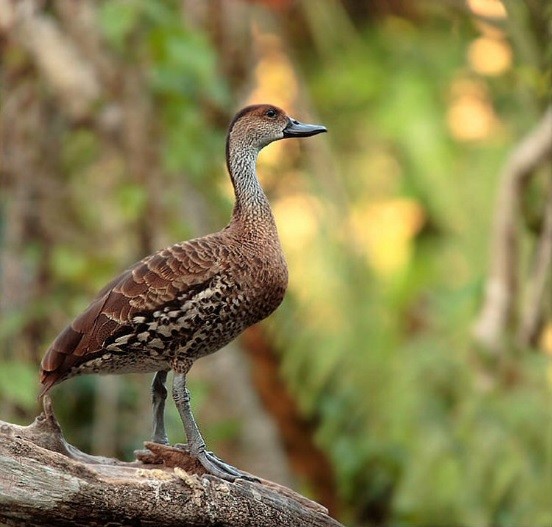Birdfinding.info ⇒ Generally scarce and difficult to find across most of its range, with some notable exceptions. Habituated wild birds can be seen easily at Willie Ebanks’ Farm on Grand Cayman, Royal Palm Reserve east of Negril, Jamaica, and the National Botanical Garden in Santo Domingo, Dominican Republic. Other reliable sites include Botanic Park (Grand Cayman), Font Hill Nature Preserve (Jamaica), and Laguna Cartagena and Boquerón National Wildlife Refuges (Puerto Rico).
West Indian Whistling-Duck
Dendrocygna arborea
Endemic to the West Indies: Cuba, the central Bahamas (Andros, Exuma, Long Island, and adjacent islets), Turks & Caicos, the Cayman Islands, Jamaica, Hispaniola, Puerto Rico, Antigua, Barbuda, and Guadeloupe.
Has declined across much of its range, and now persists mostly in fragmented, relict populations. Extirpated from several islands, including most of the Bahamas, the Virgin Islands, St. Kitts, and Nevis. With effective protection, some populations have rebounded, especially on Puerto Rico.
Often associated with mangroves, which some populations use for roosting, but it occurs in most wetland habitats, including marshes, ponds, and sometimes seashores.
Identification
Reddish-brown overall, with pale grayish cheeks, throat, and neck, black bill and legs, heavily spotted breast and belly, and a striking black-and-white ocellated pattern on the flanks. Shows a broad white wingstripe in flight.

West Indian Whistling-Duck. (Willie Ebanks’ Farm, Grand Cayman; December 11, 2007.) © Steve Metz
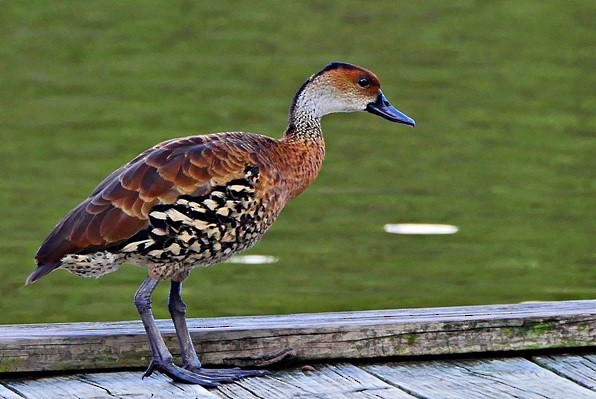
West Indian Whistling-Duck. (La Parguera, Puerto Rico; September 8, 2017.) © Sadhu Govardhan
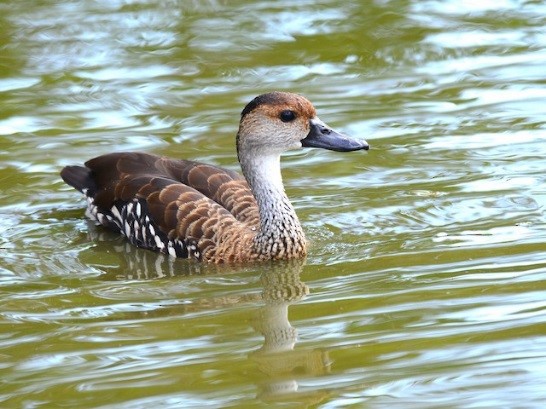
West Indian Whistling-Duck. (Willie Ebanks’ Farm, Grand Cayman; March 19, 2013.) © Alan Van Norman

West Indian Whistling-Duck, showing broad white wingstripe. (Laguna Cartagena National Wildlife Refuge, Puerto Rico; March 19, 2014.) © Steve Collins
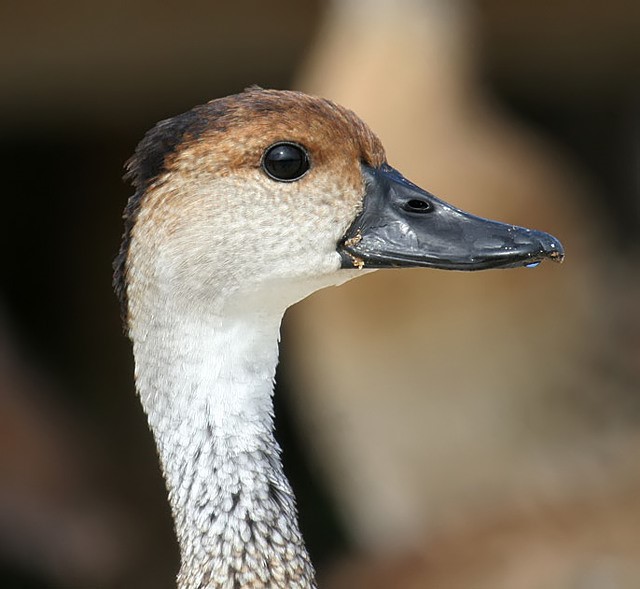
West Indian Whistling-Duck. (Willie Ebanks’ Farm, Grand Cayman; December 16, 2007.) © Steve Metz

West Indian Whistling-Duck. (Willie Ebanks’ Farm, Grand Cayman; December 16, 2007.) © Steve Metz
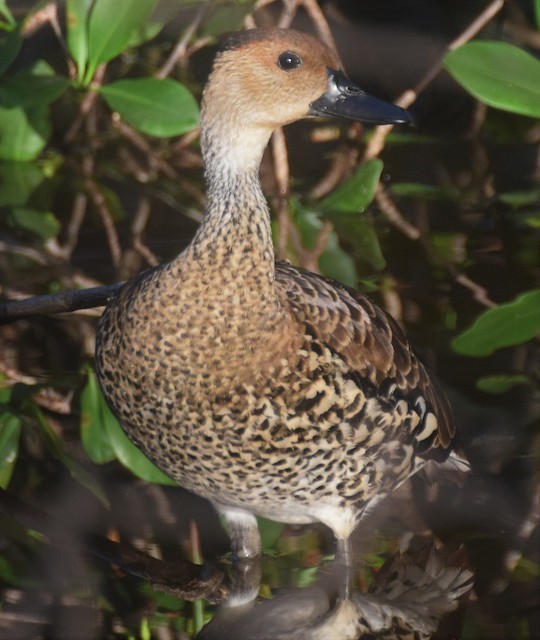
West Indian Whistling-Duck, showing heavily spotted breast and belly. (Boquerón National Wildlife Refuge, Puerto Rico; February 12, 2018.) © Luis Muñoz
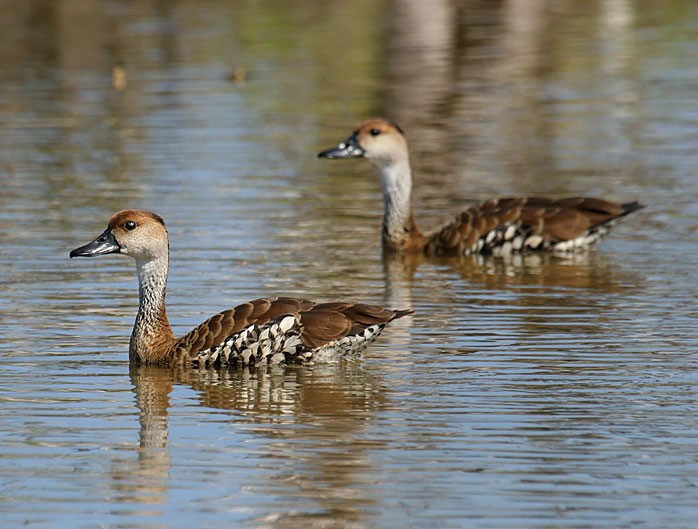
West Indian Whistling-Duck. (Willie Ebanks’ Farm, Grand Cayman; December 16, 2007.) © Steve Metz
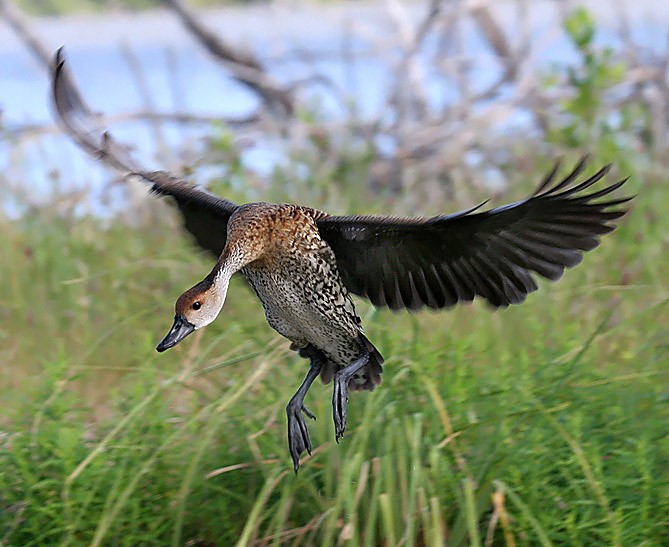
West Indian Whistling-Duck. (Willie Ebanks’ Farm, Grand Cayman; December 11, 2007.) © Steve Metz
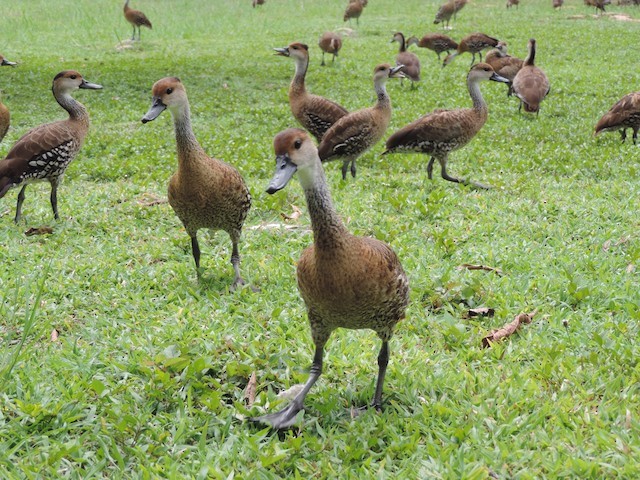
West Indian Whistling-Duck, the welcoming committee of a habituated wild flock. (Willie Ebanks’ Farm, Grand Cayman; June 12, 2014.) © Chuck Schussman
Cf. Fulvous Whistling-Duck. West Indian is most similar to the widespread Fulvous Whistling-Duck, which overlaps with it regularly in western Cuba and occasionally elsewhere. Fulvous usually appears brighter, more orange overall than West Indian, and has long buffy or whitish plumes on its flanks.
Notes
Monotypic species.
IUCN Red List Status: Vulnerable.
References
BirdLife International. 2016. Dendrocygna arborea. The IUCN Red List of Threatened Species 2016: e.T22679770A84497213. http://dx.doi.org/10.2305/IUCN.UK.2016-3.RLTS.T22679770A84497213.en. (Accessed September 12, 2017.)
eBird. 2018. eBird: An online database of bird distribution and abundance. Cornell Lab of Ornithology, Ithaca, N.Y. http://www.ebird.org. (Accessed September 10, 2018.)
Garrido, O.H, and A. Kirkconnell. 2000. Field Guide to the Birds of Cuba. Cornell University Press, Ithaca, N.Y.
Haynes-Sutton, A., A. Downer, R. Sutton, and Y.-J. Rey-Millet. 2009. A Photographic Guide to the Birds of Jamaica. Princeton University Press, Princeton, N.J.
Latta, S., C. Rimmer, A. Keith, J. Wiley, H. Raffaele, K. McFarland, and E. Fernandez. 2006. Birds of the Dominican Republic and Haiti. Princeton University Press, Princeton, N.J.
Raffaele, H., J. Wiley, O. Garrido, A. Keith, and J. Raffaele. 1998. A Guide to the Birds of the West Indies. Princeton University Press, Princeton, N.J.
